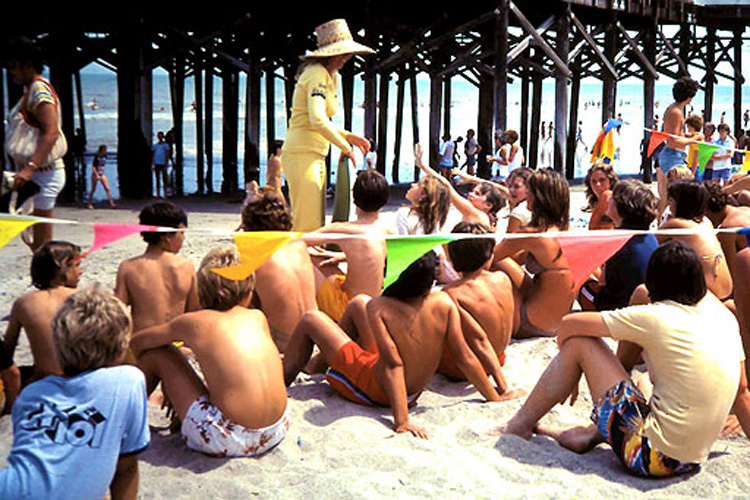Patti Serrano is one of the most influential voices in bodyboarding.
Between the mid-1970s and the late 1990s, this hyperactive soul worked for Tom Morey, organized some of the first bodyboarding contests, ran magazines, and founded sports organizations.
Serrano's life is a movie script. In an exclusive interview with SurferToday, the creator of the "History of Bodyboarding" Facebook group reveals how bodyboarding sculpted her days.
Today, she likes to be called Patti-with-an-i and manages a busy agenda that includes book writing, podcasts, social meetings, and public speaking.
It's been a dream journey, hasn't it? And without further ado, we dive deep into Patti Serrano's private world.
1. Who is Patti Serrano? How old is she, and what is her occupation today?
Patti Serrano, now 72 years old and retired from business consulting, looks back to where her promotion career began at the early age of seven when she promoted talent shows in her neighborhood.
It isn't a surprise that, years later, in the mid-1970s, at a small factory office in Carlsbad, California, she used those early learned techniques to help sell and promote the "Boogie Board," an ocean sports product.
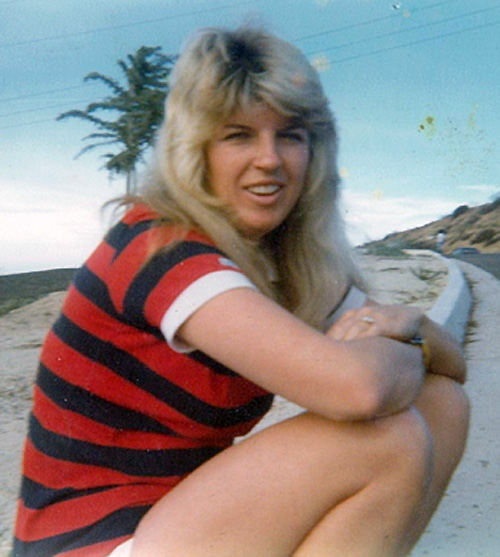
2. What is her connection to bodyboarding?
Patti Serrano is one of the unsung heroes of the sport of bodyboarding. Patti was the first contest organizer, promoter, and bodyboard mag editor and was there at the very beginning of bodyboarding's humble beginnings.
Patti met Tom Morey, the inventor of the boogie board, now called a bodyboard, in the late 1960s on the island of Kauai. Tom would come in after a surf session to her health food bakery named Pat C Pink Breads and munch down her infamous oatmeal cookies.
He met his wife, Marchia, during that time on Kauai. After they married, they moved to Costa Rica, and Patti moved back to California because of a family emergency.
They never saw each other until they ended up living one block from each other in Carlsbad, California, in 1975.
Tom asked Patti to come down to his small factory to help answer the phones. Patti was in the middle of taking business law classes with an ultimate plan to enter law school.
She had a small two-year-old son, Arlo, and was looking for a long-term career. Tom told her: "You're not a lawyer; you're a beach chick who needs to come to work for a surf company."
Patti tried the boogie board just to see if it was something she would like since surfing was a little too difficult for her. Once she took off on that wave in Carlsbad, she remembers being totally hooked.
She went back to Tom and told him that she was 100 percent in yet needed a couple of months to finish a couple of classes. She asked if her sister Debbie could come to work for him in the meantime.
Debbie Colwell, who ended up being the founder of Custom X Bodyboards, went to work for Tom in the factory shrink-wrapping boards for shipment.
She actually started a couple of months before Patti and has a historical background as well.
Patti's early role was just to answer the phones. Tom liked how she spoke to the accounts, so he decided to send her out to sell in person.
Patti hated sales and told Tom just to let her stay in the office. With a mentoring spirit, Tom convinced Patti she could do sales.
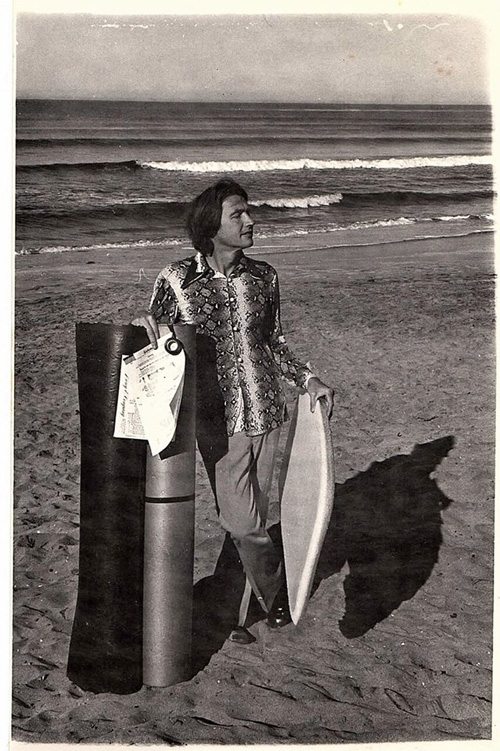
Patti considers Tom to be her mentor for all the encouragement he gave her and the faith he put in her in those days.
She went on to open FedMart in San Diego, Toys R' Us headquartered in Saddle Brook, New Jersey, and accounts like Woolworths headquartered in New York City.
Patti helped set up trade shows like the Surf Expo in Florida and the National Sporting Goods Association in New York.
Patti states today that she never thought a little boogie board would have her traveling so much.
Tom remembered Patti's role in Hawaiian Outrigger Canoe paddling in California and asked if she would like to start a competition with boogie boards.
Even though Tom has always been into more expression sessions than comps, he knew it could garner up exposure.
He asked her to do a "Boogie Day" to start. Patti arranged a day to give away boogies and t-shirts. About 40 people showed up that day.
Patti still has the Super 8 film and says it is a wonder how these people found out about it. There was no social media in those days.
These are some of the highlights and events that followed after that first "Boogie Day:"
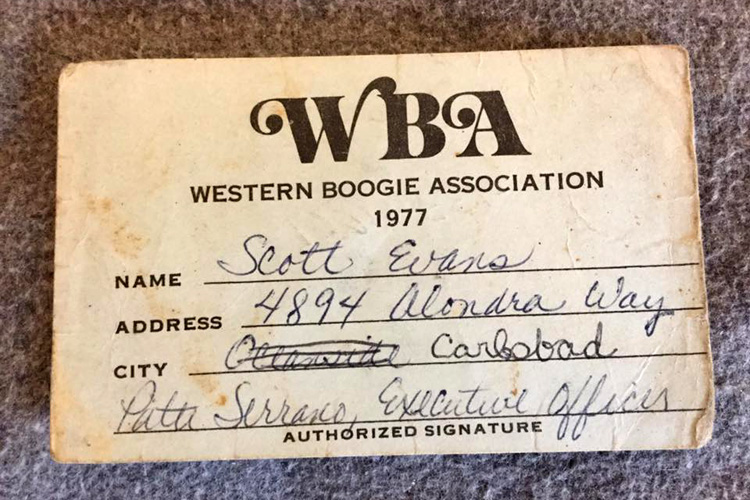
In 1977, Patti founded the first competition circuit aptly named the Western Boogie Association, where the first pro events were launched.
Many of the AAA riders needed to advance from that division - names like Mike Lambresi, Tony Prince, Scott Evans, and Roger Waller were some of the first to turn pro and earn rewards like traveling to out-of-state events, with Patti, as pro ambassadors.
In February 1977, at Oak St. Laguna Beach, there was a Team Competition. Teams like Offshore Surf Shop (Carlsbad), Harbor Surf Gallery (Oceanside), and DeNault's Hardware (San Clemente) were represented and made this event a success.
In December 1977, at the Haleiwa Contest, California riders were excited to meet some of the Hawaiian riders, and lasting friendships were born that year.
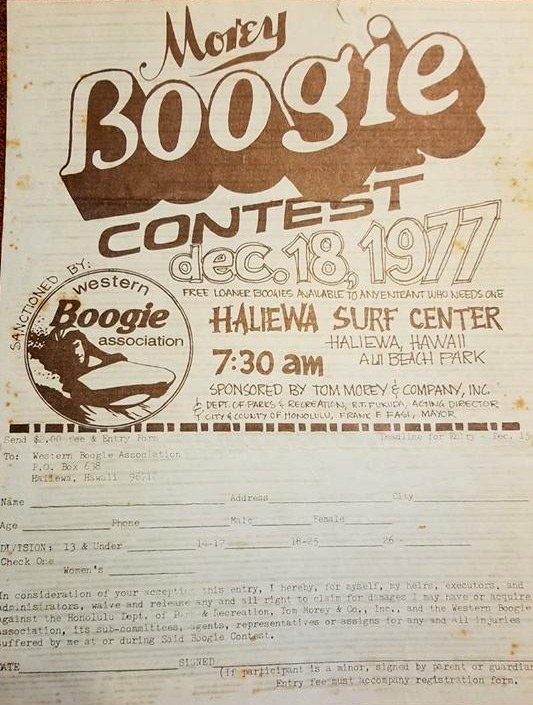
The California 1978 Invitational, at T-Street, San Clemente, was won by AAA rider Roger Waller, who was the first to advance into the pro division.
Tom asked Patti: "How do we open up the East Coast like you are doing on the West Coast and Hawaii?"
One of Patti's biggest coups was to take 30 boards to beaches like Virginia Beach, Virginia, and Cocoa Beach, Florida, and let beachgoers try them.
Then, when excited participants wanted to know where to buy one, she would direct them to the surf shops that stocked some consignment boards.
The shops were consigned to only a few, so they were calling the factory for ASAP orders.
Patti took riders with her to help, like Scott Evans, Roger Waller, Tony Prince, Joe Evans, and Bobby Owens, who had earned spots from competitions.
These were the first pioneers and ambassadors to reach out to beachgoers and share the stoke.
Later, promotions like "Put Your Body on a Boogie" were created for people to enjoy and sample a boogie on a wave.
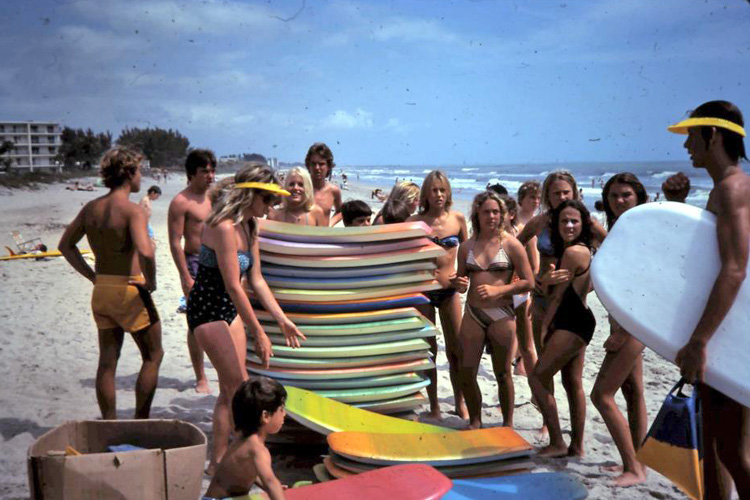
Patti created the Gap Morey Boogie Challenge in California to expand the same idea as the East Coast and let beachgoers experience fun riding waves with the new pros in the sport.
At the First Wave Pool Demo, Scott Evans and Roger Waller, two of the pioneer pros, traveled with Patti to Big Surf in Tempe, Arizona, to demo the boards to a very excited audience of inland riders.
Patti designed the first pro event held in Huntington Beach, California, sponsored by The Gap. Mike Lambresi won the first title. He took home a $300 check that day.
Many historical write-ups claim that the sport's pro divisions were created in the golden years of the 1980s and 1990s, but few people know there had been a pro event organized in 1979.
Patti was asked by the former rock powerhouse station KMET to do a surf report from Oceanside, California. She got to plug boogies at the end of the report.
In 1979, Kransco of San Francisco, a water and pool products company, bought Tom Morey and Co.
Some of the key people were hired from Tom Morey because they were interested in keeping those who had a beach consciousness.
Patti was one of them and took on the position and role of sports promotion manager.
In 1980, Patti put on the first New York event at Gilgo Beach, Long Island. It was the first time enthusiasts saw a stand-up rider on a boogie. Bobby Owens became a local hero on that trip.
Also, in 1980, Patti was asked by Kransco to go to Hawaii to pick three local riders to be on the Morey Boogie team.
She was told about Pat Caldwell from the Hawaii rep. So, she met him first, and he became the first Hawaiian rider.
Pat told Patti about a young local grom named Ben Severson who lived out in Hawaii Kai that ripped. She met Ben, and he was asked to be on the team.
Next, she saw Keith Sasaki ripping it up at Point Panic at an event she did there and asked if he would join the team. And the rest is history. They all became icons of the sport.
Things were beginning to pop. Patti was asked to go to a large, prestigious ad agency in Chicago named Foote, Cone & Belding (FCB). They were representing Sunkist Soda.
She wore a Hawaiian blouse and carried a boogie into the meeting after walking from her hotel through Chicago snow.
She said she only had one slide loaded in the carousel of Jack Lindholm charging a big wave in Hawaii.
When asked how she managed to close such a huge sponsor and garner money for beach events, she replied: "I guess they just picked up on the stoke."
This deal opened up all the summers of sampling the soda and riding boogies. There were orange t-shirts, boogies, flags, banners, and lots of fun which the boogie represented.
After all the boogie success, Patti decided to take a break and didn't return until she heard from top riders that the only magazine on bodyboarding was discontinuing and that she should start one.
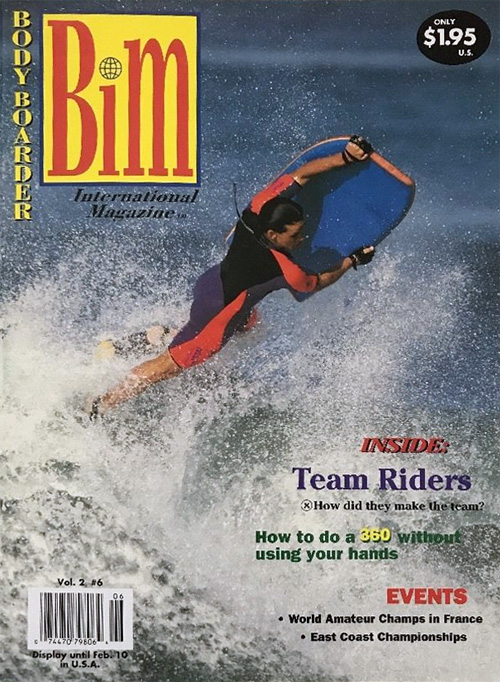
At that point, Patti got reenergized again and created Bodyboarder International Magazine (BIM). It was a magazine put together by bodyboarders for bodyboarders.
From that success, Patti decided to start a new competition circuit called the Bodyboarder International Association (BIA).
Many things were different in this circuit. You could be a noncompetitor and enter the recreational division - just to see if you liked it.
Patti used many of the early techniques of sampling in these events by encouraging enthusiasts just to try going out in a heat. Many times, they didn't have a board, so she brought loaners.
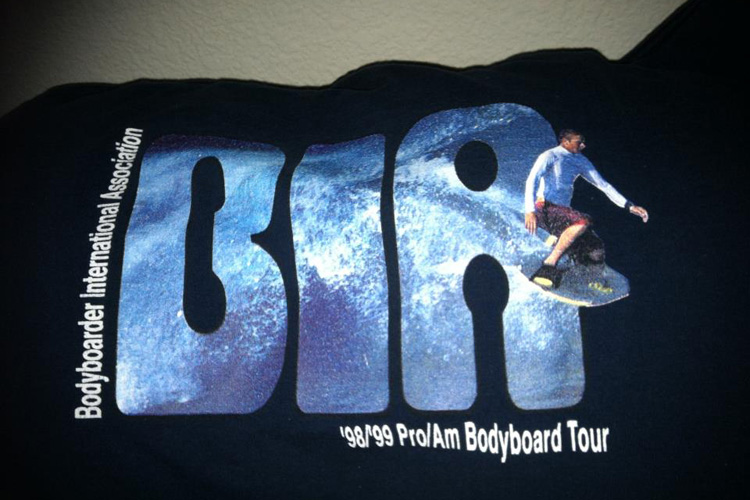
The pro drop-knee division started in this circuit. Patti felt that the prone riders and drop-knee riders shouldn't have to be scored together. That idea stuck and is used today in competitions.
Patti sold BIM and BIA and retired from the sport in 1999.
3. Why is it so important to keep the history and the legacy of bodyboarding alive?
The history of the sport is now 40+ years old, and a lot has happened. Tom's vision of three boards in every garage worldwide is coming into being.
Dads, moms, and children are all riding boards today in all parts of the world. The industry has grown and is experiencing a revival for vintage boards.
There is a big interest to know more about how the sport got started. For posterity, it is important to gather as much information as possible while the pioneers are still alive.
4. How would you like to see the Facebook group evolve?
The Facebook page "History of Bodyboarding" has generated a worldwide audience because of the posts about the sport's early days.
Photos and memorabilia that many people didn't know existed are showing up. The size of the group is small because members don't feel like they can contribute.
Yet, viewership is huge because many people are interested in the early pioneers and the first beginnings. I'd like to see it evolve into one of the premier pages for chronicling the sport.
5. How do you describe Tom Morey's contribution to the sport of bodyboarding?
First off, there wouldn't be a sport if it wasn't for Tom Morey. His vision for people to enjoy the ocean was very profound when you look at the growth over the last 40 years.
He has single-handedly stoked more people about the ocean than even the sport of surfing because of the sheer numbers and the demographics.
His contribution has created careers, lifestyles, and friendships worldwide. The beauty of his contribution is how humble he is about the size of the sport.
He acts like it was just an extension of a desire for people to get into the ocean. Yet, the genius of the product is the ability to carve through waves and perform like nothing that has ever been invented before.
There isn't a person out there who doesn't revere him as the "Father of the Boogie."
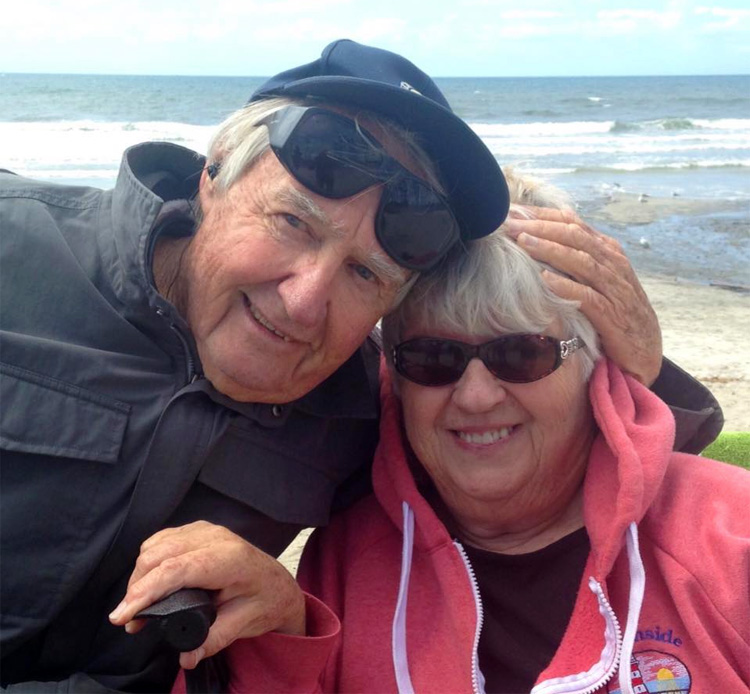
6. What should be done to improve the sport and its visibility?
I think the sport needs to completely start over with simple jamborees and challenges on the beach to get the younger generation stoked on the ocean.
We've gone through several generations now, and it's time to get the youngest generation - that is, 7 to 8 years old - out in the water, learning how to enjoy the ocean.
If we could find a young adult with lots of energy to create events that run simultaneously with other beach and surf events, that would be good.
The sport has stagnated because the older generation is tired and not capable of any promotion.
It needs to get into the hands of a young, enthusiastic business person who can contact the media and begin a process very similar to the early days when people wanted to know what it was.
It's amazing to think that when I got started, there was no social media. Today, anyone can get the word out a lot easier. Keep it simple and just start over. Take all the successful events and duplicate them.
I think the manufacturers of bodyboarding products need to create a fund and hire a PR agency for the sheer purpose of getting media attention.
To get back to the basics, a group called the Association of Bodyboard Companies (ABC) can funnel their membership money to promote the sport.
Engage in sampling events where enthusiasts can try out their products.
7. Why is there so little literature on bodyboarding?
I think it's because there are just so many people who want to ride the boards and not write about it.
I know there have been many videos made throughout the years, and there are ample channels on YouTube.
You just don't see many articles. A PR agency could fix that.
8. What do you plan to do to promote the sport in the near future?
Hahaha! I think my promotional days are over, and it's time for me to just attend events.
I certainly wouldn't be opposed to helping any younger person get started. The youth are the future of the sport.
